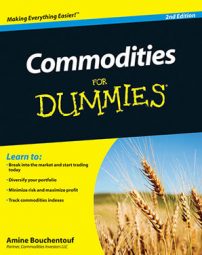As with a number of other commodities, coffee production is dominated by a handful of countries. Brazil has historically been the top producer of coffee in the world and has held this position for several decades. Traditionally, Colombia has held the number two spot, but it’s lost that position to up-and-comers such as Vietnam and Indonesia. Table 19-1 lists the largest coffee-producing countries.
| Country | Coffee Production (Thousands of Bags) |
|---|---|
| Brazil | 39,470 |
| Vietnam | 18,000 |
| Indonesia | 11,380 |
| Colombia | 8,500 |
| India | 4,827 |
| Ethiopia | 4,500 |
| Mexico | 4,200 |
| Honduras | 3,527 |
| Guatemala | 3,500 |
| Uganda | 3,000 |
Source: International Coffee Organization
Large-scale coffee production is measured in bags. One bag of coffee weighs 60 kilograms, or approximately 132 pounds.
If you want to further investigate the ins and outs of the coffee markets,Mark Pendergrast’s excellent book Uncommon Grounds: The History of Coffee and How It Transformed Our World (Basic Books), to help you understand the mechanics of the global coffee trade. You may also want to visit these websites for more information:
Just as choosing the right flavor is important when buying your cup of coffee, knowing the different types of coffees available for investment is crucial. The world’s coffee production is pretty much made up of two types of beans:
Arabica: Arabica coffee is the most widely grown coffee plant in the world, accounting for more than 60 percent of global coffee production. Arabica is grown in countries as diverse as Brazil and Indonesia. It’s the premium coffee bean, adding a richer taste to any brew, and, as a result, is the most expensive coffee bean in the world. Because of its high quality, it serves as the benchmark for coffee prices all over the world.
Robusta: Robusta accounts for about 40 percent of total coffee production. Because it’s easier to grow than Arabica coffee, it’s also less expensive.
You have several ways to invest in coffee production. One way is to buy coffee in the futures markets; the other is to invest in companies that specialize in running gourmet coffee shops.

